The Evolution of Hunting Knives: From Prehistoric Tools to Modern Gear
Explore the journey of hunting knives from ancient tools to today’s innovative gear. Discover their evolution and find the perfect knife for your needs.
Why Hunting Knives Continue to Evolve
Hunting knives have long played a crucial role in human history, from ancient tools to today’s innovative gear. Their evolution reflects human ingenuity, beginning with primitive stone tools crafted into pointed edges. As civilizations advanced, the design and functionality of hunting knives evolved, influenced by the introduction of metals during key historical periods, such as the Iron Age.
The evolution of hunting knives highlights technological advances and their significance for hunters worldwide. Each design change reflects practical needs and a deeper understanding of materials and craftsmanship. Knifemakers consistently innovate to enhance functionality, making hunting knives both practical tools and symbols of human advancement.
In this blog, we’re exploring the fascinating evolution of hunting knives – from their historical significance as survival equipment, and changes in design over time to how they have become essential gear for today’s hunters.
Whether you are an experienced outdoorsman or a newcomer looking for the right knife, this exploration will help you identify the features that best suit your needs. Join us on this journey through time as we uncover the stories behind these remarkable tools.
17th-Century Origins: A Symbol of the Hunt
The history of hunting knives dates back to early European hunters, who popularized them as essential tools for processing game and serving as symbols of status. The foundations of these knives can be traced to the Bronze and Iron Ages, where their practical use became intertwined with the social standing of those who wielded them.
Middle Ages
As the Middle Ages unfolded, hunting became part of everyday life and a means of survival. During this time, knives found their way into armor, highlighting their importance as tools for dressing game and self-defense weapons.
Shift in symbolism
By the 17th century, the hunting knife had evolved into a definitive symbol of the hunter. This period marked a significant transition, during which hunting knives began to take on unique characteristics associated with craftsmanship.
Traditional forging techniques were employed to create knives that were functional and emblematic of the hunter’s identity. These knives served as indispensable tools, showcasing both necessity and prestige among hunting enthusiasts.
Renaissance period
The Renaissance period brought about a remarkable refinement in the evolution of hunting knives. With a surge in tradecraft and the rise of professional knife-making, these tools began to embody artistry as well as utility.
Hunting knives from this era often featured elaborate engravings and were crafted from luxury materials, intended to showcase the status of the noble class and affluent hunters. This transformation indicated a shift in how these knives were tools of survival and symbols of wealth and prestige within society.
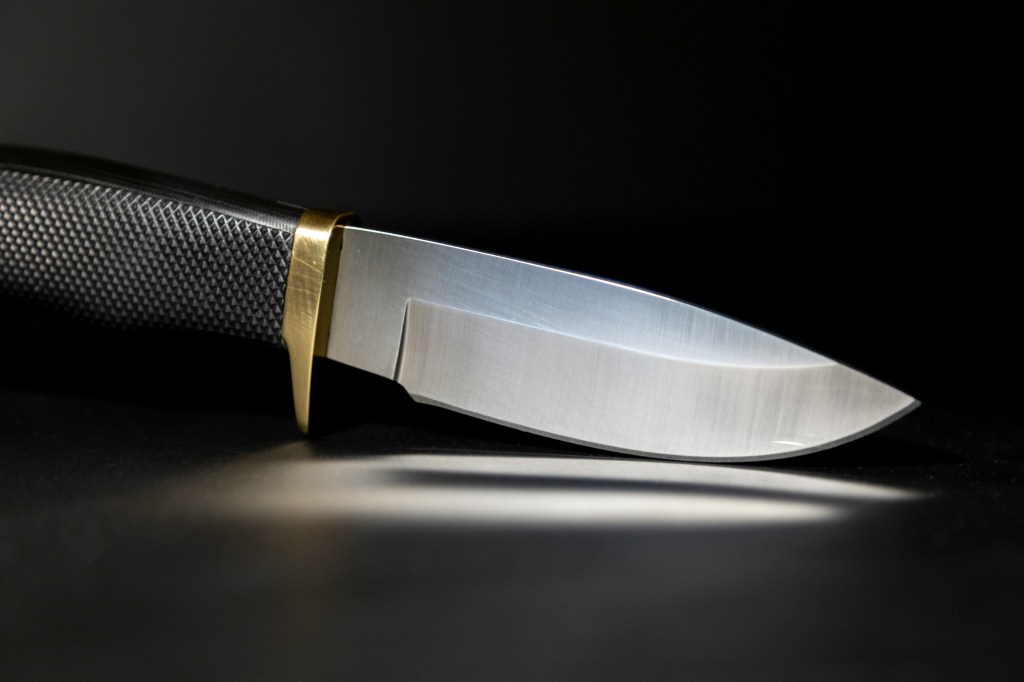
Bowie Knife Influence and the Rise of American Styles
The Bowie knife has set new standards for versatility and performance, shaping the direction of hunting knife designs worldwide. Its influence is evident in various blade styles, notably in the discussion of drop-point versus clip-point blades.
Originally emerging in the 19th century, this fixed-blade knife became an iconic hunting tool. It symbolizes the rugged individualism of the American West, largely thanks to its namesake, Jim Bowie, an American frontiersman.
Features and versatility
The Bowie knife is so highly regarded because of its fixed blade design, which offers a large size and a distinctive clip point. This combination enhances aesthetic appeal and supports various applications, from heavy-duty to intricate cutting tasks. Its sturdy construction allows it to endure rigorous use, making it a durable choice for adventurers.
Types of Bowie knives
The Bowie knife comes in various types, tailored for different tasks.
The traditional Bowie knife typically features a long clip-point blade, often complemented by a wood or bone handle. This style is well-suited for heavy-duty activities, making it a reliable choice for those who engage in rugged outdoor challenges.
In contrast, the clip point style features a concave back and a sharp point, making it ideal for precise cuts and detailed work. This type is favored by those who prefer to engage in intricate tasks.
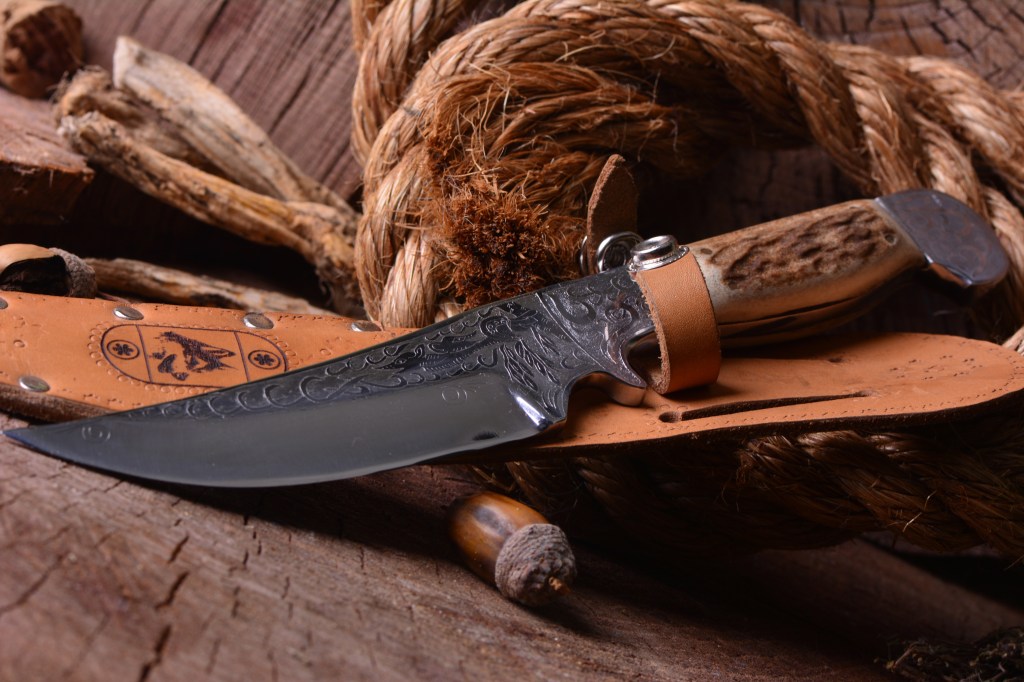
Gerber and the Growth of Commercial Knife Manufacturing
Gerber hunting knives have played a significant role in the evolution of knife production due to their consistent quality and the use of modern materials. Through advanced manufacturing processes, Gerber has made high-quality hunting knives accessible to a broader market.
Early beginnings
Gerber entered the hunting knife market in 1947 with the introduction of the AF Hunter. This model was specifically manufactured for Abercrombie & Fitch, marking the company’s first foray into hunting knives. Just a year later, in 1948, Gerber produced the Shorty, a compact hunting knife designed to complement the larger AF Hunter.
Innovations and redesigns
The innovation did not stop there. In 1959, Gerber launched the Big Hunter, which would undergo several redesigns over the years. By 1970, this popular model had evolved into what is now known as the Magnum Hunter, showcasing the company’s commitment to enhancing functionality and design.
Customization and design
In addition to producing standard hunting knives, Gerber explored the custom knife market, particularly focusing on custom handles. The company became notable for its die-casting techniques, which allowed for the creation of precise designs.
This innovation ultimately led to the development of the now-standard aluminum handle, setting a benchmark in the industry for durability and quality. In addition, Gerber began to produce folding knives, specifically for fishing.
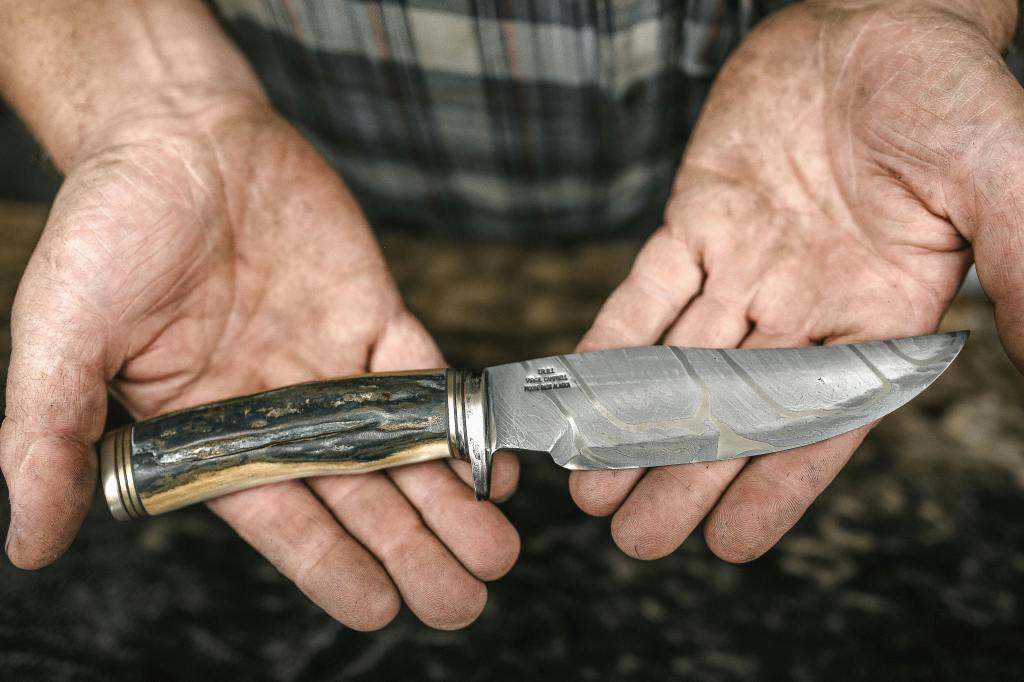
Practical Features: Skinning, Gutting, and Multi-Purpose Utility
Hunting knives serve several essential functions in the field, particularly for tasks such as skinning and gutting game. Their design has evolved over time, reflecting advancements in both blade shapes and safety features.
Skinning and gutting tools
Specific blade shapes have proven more effective for skinning and gutting. For instance, a trailing-point blade is ideal for skinning knives, as it allows for precise cuts along the contours of the animal without damaging the meat.
Additionally, a hollow grind design provides a sharp, fine edge that facilitates smooth slicing through skin and muscle, making the task quicker and more efficient.
Multi-purpose knives
Beyond specialized tasks, many hunters prefer multi-purpose hunting knives that combine various functions into one tool. These knives offer versatility, making them valuable assets in the field for everything from preparing big game to general outdoor use.
Moreover, modern hunting knives have incorporated several safety features, such as ergonomic handles and locking mechanisms, which enhance user safety and confidence when handling these tools.
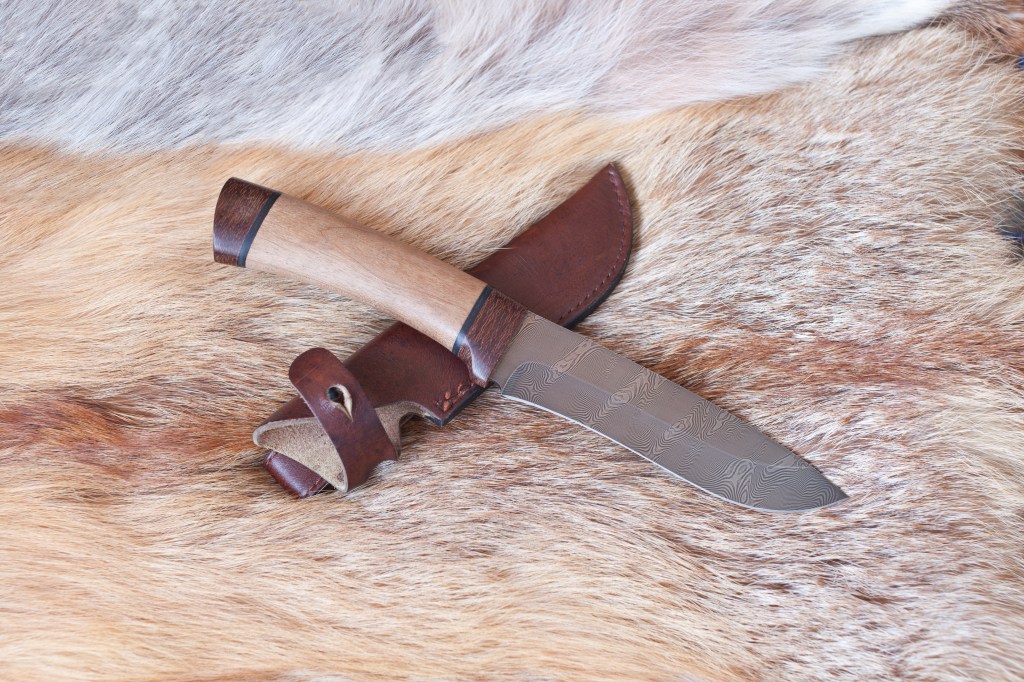
Modern Materials: From Basic Steel to Advanced Alloys
The evolution of steel composition has significantly transformed the quality and performance of knives. Modern advancements have led to the development of high-carbon stainless steel and Damascus steel, both celebrated for their exceptional corrosion resistance, durability, and sharpness.
These materials ensure that knives maintain their cutting edge longer, making them ideal for a variety of tasks. As a result, users can enjoy enhanced performance without the frequent need for sharpening, which is a crucial factor in the practicality of any knife.
Improved handle options
In addition to advancements in blade materials, handle designs have also seen substantial progress. Many modern knives are equipped with handles crafted from mixed materials such as micarta or rubber.
These materials enhance the knife’s aesthetic appeal and provide a secure and comfortable grip. This improvement in handle design ensures that users can maintain control even in challenging conditions, leading to safer and more efficient knife handling.
Evolving knife designs
The landscape of knife design has expanded dramatically to meet diverse needs and preferences. Today’s knives come in a plethora of shapes, styles, and materials, ensuring that there is a perfect option for every function.
Whether it’s skinning game, cutting meat, or tackling other specific tasks, the modern knife is tailored to perform with precision.
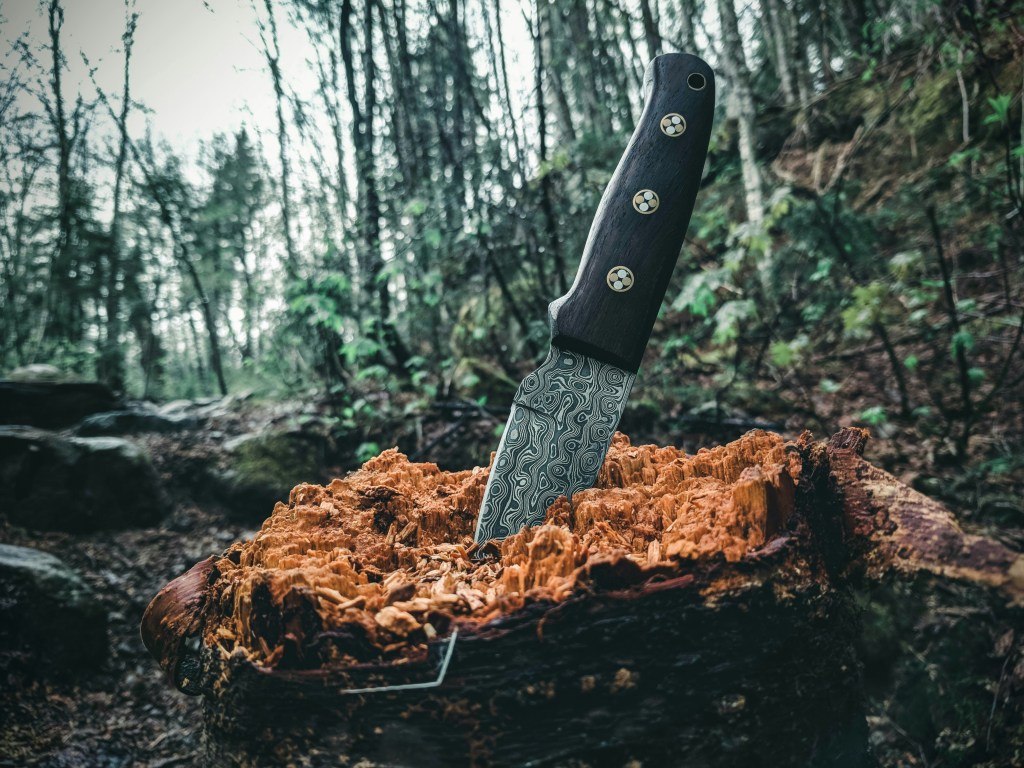
Collectors and Enthusiasts: The Legacy Continues
The heritage of hunting knives showcases human ingenuity and appeals to both functional users and passionate collectors.
Origins
The journey of hunting knives begins with primitive stone tools, which were essential for survival. These early implements allowed our ancestors to cut meat and craft wood, serving as crucial instruments for securing food and building shelter.
Bronze and Iron Ages
As civilizations advanced, so did knife-making techniques, setting the stage for a fascinating evolution in design and purpose. With the advent of the Bronze and Iron Ages, materials like iron and bronze revolutionized knife design. This era marked a significant blending of practicality and aesthetic appeal, as decorated knives became status symbols for skilled individuals.
Renaissance
The Renaissance elevated the art of knife-making, as master craftsmen gained recognition for their ability to create intricate designs using luxurious materials. This period celebrated the artistry involved in crafting knives, allowing for both functionality and beauty to coexist.
Industrial Revolution
The Industrial Revolution brought a shift in knife production, thanks to mass manufacturing and the introduction of steel alloys. This shift made hunting knives more accessible to the public, leading to a surge in their popularity.
20th-century
By the 20th century, military influences began to shape hunting knife designs, with many models adopting elements from military utility knives. This integration of military functionality emphasized durability and practical use in rugged environments.
Modern innovations
Today, hunting knives are characterized by specialization and advanced material technologies. Modern designs focus on optimizing tools for specific tasks, such as gutting and skinning, reflecting an understanding of users’ diverse needs.
Legacy of hunting knives
The ongoing evolution of hunting knives showcases their enduring legacy, bridging the gap between historical significance and contemporary utility. The use of contemporary materials like titanium and stainless steel has further transformed the landscape of hunting knives, ensuring they remain functional and appealing to both dedicated collectors and practical users.
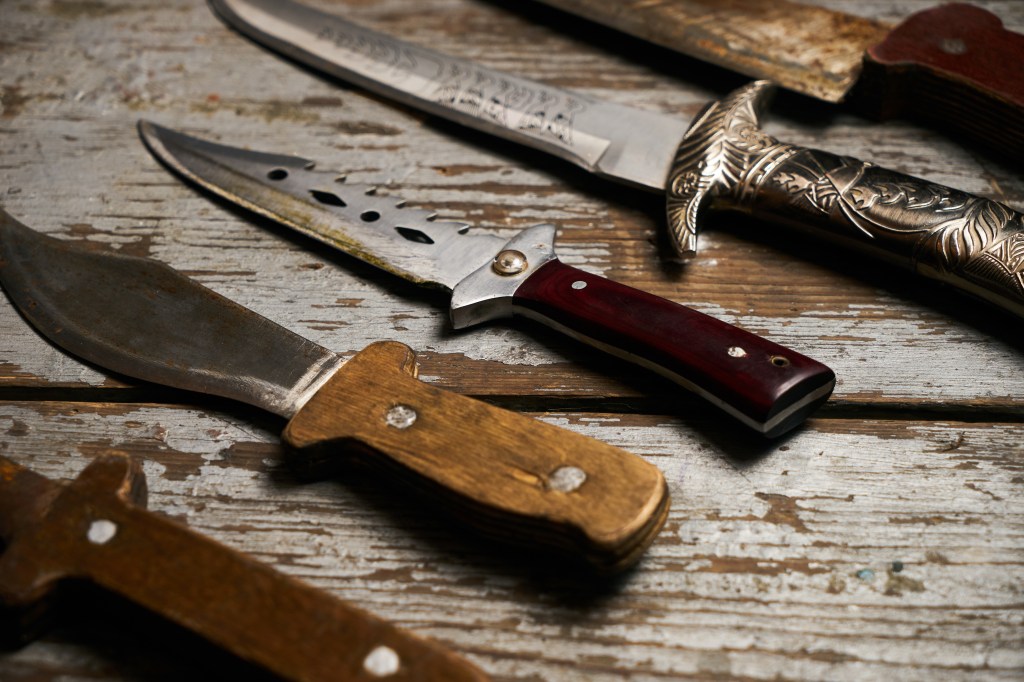
Adapting Tradition for the Future
Hunting knives represent a fascinating blend of centuries-old craftsmanship and modern innovation. Traditionally handcrafted for detail, these tools have evolved with advanced manufacturing processes for improved durability and performance.
Contemporary hunting knives blend modern materials and techniques with the essence of their historical counterparts, catering to today’s outdoor enthusiasts. This blend of tradition and innovation keeps hunting knives essential for hunters, honoring traditional methods while adapting to new technologies in outdoor activities.
Sources
http://blog.gerbergear.com/the-long-history-of-gerber-hunting-knives
http://thebowieknife.com/blogs/bowie-knife-blog/comprehensive-guide-on-hunting-knives
http://outfit4events.com/eur/articles/knives/hunting-knife-hunter-s-symbol-since-17th-century
http://louismartincustomknives.com/hunting-knives-blades-outdoor-history
http://gunfinder.com/articles/75678
http://unholyblades.com/blogs/news/history-transformation-of-hunting-knives
http://ashgears.com/blog/f/the-history-and-evolution-of-handmade-hunting-knives
